 A Lumo Lead®, photograph from the publication
A Lumo Lead®, photograph from the publication
Sung Il Lee (Pukyong National University, Busan, Republic of Korea) and colleagues have published open access in the journal Ocean & Coastal Management on at-sea trials using Lumo Leads® to reduce seabird bycatch by Korean tuna longliners.
The paper’s abstract follows:
“Bycatch threatens albatrosses and petrels, prompting all tuna Regional Fisheries Management Organizations to require bycatch mitigation measures in areas overlapping high seabird densities. In the Southern Hemisphere, and with one exception of the IATTC, tuna longliners south of 25°S in Indian and Atlantic oceans and south of 30°S in western Pacific Ocean must use at least two of the following three measures: night setting, bird-scaring lines, and branch line weighting. Adding weights is complex, and carries concerns about negative impacts on target species catch rates and crew safety. From 2013 to 2016, we tested the effects of Lumo Lead® on seabird bycatch, target catch rates, and safety aboard seven Korean tuna longliners. Trials involved 358,649 unweighted and 468,476 weighted lines (40–60 g, 0–200 cm from the hook) across 483 sets. The seabird bycatch rate in weighted branch lines was significantly lower than that in unweighted branch lines (p < 0.001). There was no difference in catch rate when targeting southern bluefin tuna (Thunnus maccoyii) and a slight difference for yellowfin tuna (T. albacares). The catch rate of albacore tuna (T. alalunga, ALB) on weighted branch lines was significantly lower (p < 0.001). No safety incidents were reported during the experiment. The reduced ALB catch rate may reflect fishermen's inexperience with line weighting, but this requires further investigations. Results suggest the Lumo leads are a safe, effective seabird mitigation measure for Korean longliners but line weighting alone cannot eliminate bycatch and should be used with bird-scaring lines or night setting. More broadly, these findings provide lessons for pelagic longline fisheries globally, showing that safe and practical line weighting can be integrated into existing operations to support sustainable fisheries management and seabird conservation.”
With thanks to Yuna Kim, Seabird Project Coordinator, BirdLife Australia.
Reference:
Lee, S.I., Kim, Y., Rollinson, D.P., Wanless, R.M., Kitakado. T. & Kim, D.N. 2025. The experimental trials of line weighting options for reduction of incidental mortality of seabirds in Korean tuna longline vessels. Ocean & Coastal Management 272. doi.org/10.1016/j.ocecoaman.2025.108001.

 English
English  Français
Français  Español
Español  Four fishing hooks and fishing line are visible in this X-ray of a Salvin’s Albatross, photograph by Ruben Aleman, Fundación Juvimar
Four fishing hooks and fishing line are visible in this X-ray of a Salvin’s Albatross, photograph by Ruben Aleman, Fundación Juvimar
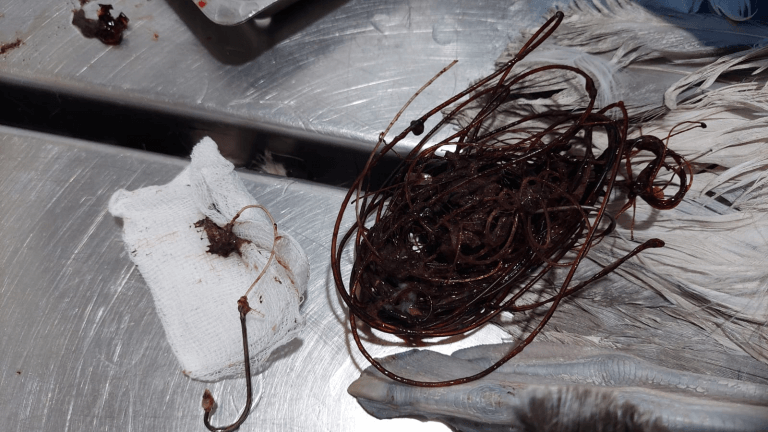 One of the removed hooks and tangled fishing line, photograph by Ruben Aleman, Fundación Juvimar
One of the removed hooks and tangled fishing line, photograph by Ruben Aleman, Fundación Juvimar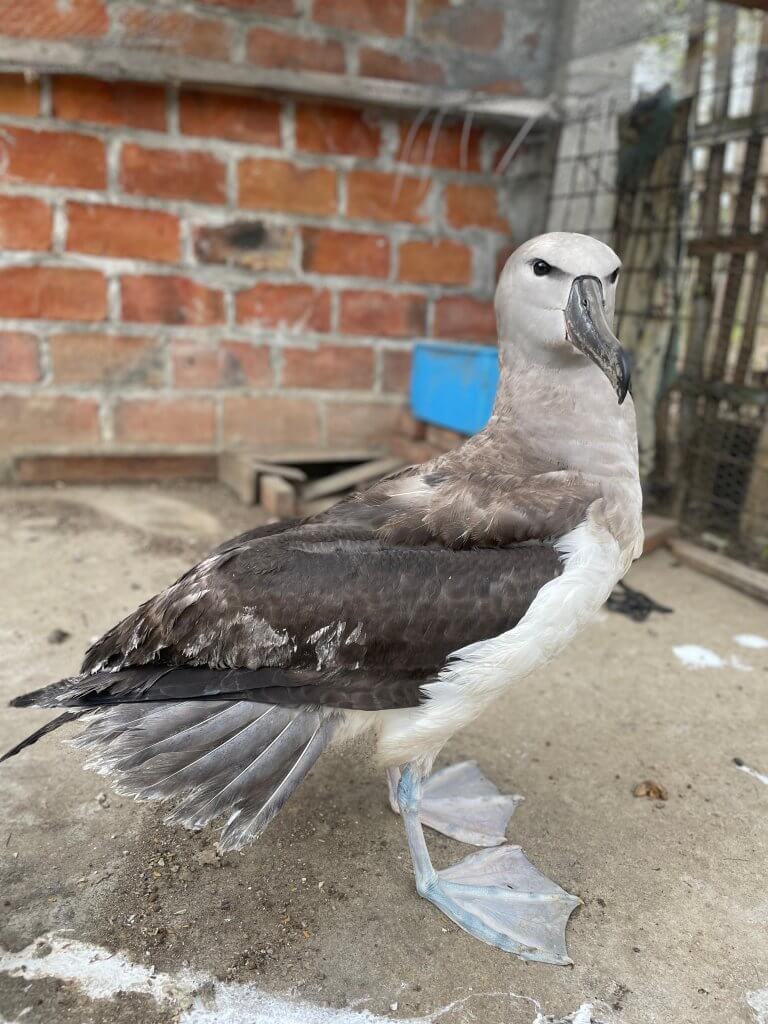 The juvenile Salvin’s Albatross in captivity, photograph by Ruben Aleman, Fundación Juvimar
The juvenile Salvin’s Albatross in captivity, photograph by Ruben Aleman, Fundación Juvimar

 Marion Island’s “Sponsor a Hectare” scheme. Each exposed rectangle represents 100 ha funded as at 04 November 2025
Marion Island’s “Sponsor a Hectare” scheme. Each exposed rectangle represents 100 ha funded as at 04 November 2025
 X out that mouse! Progress with the Antipodes Island’s Million Dollar Mouse Project funding
X out that mouse! Progress with the Antipodes Island’s Million Dollar Mouse Project funding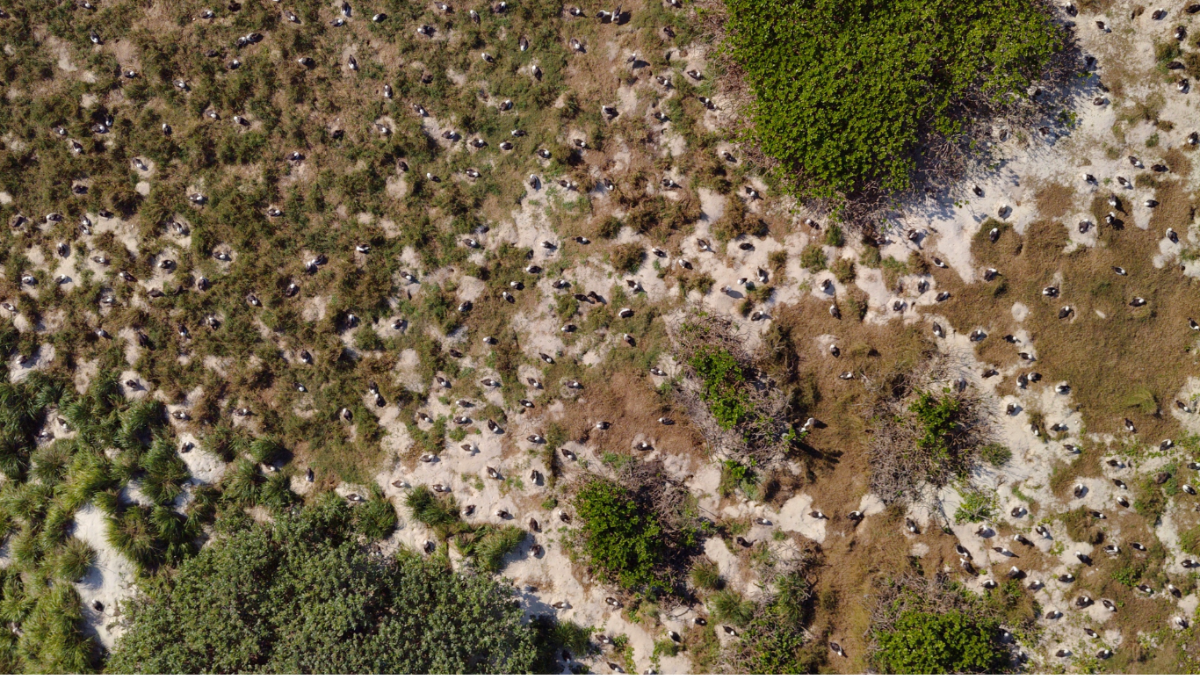 Drone image of Laysan Albatrosses on Midway Atoll during the 2024/25 breeding season
Drone image of Laysan Albatrosses on Midway Atoll during the 2024/25 breeding season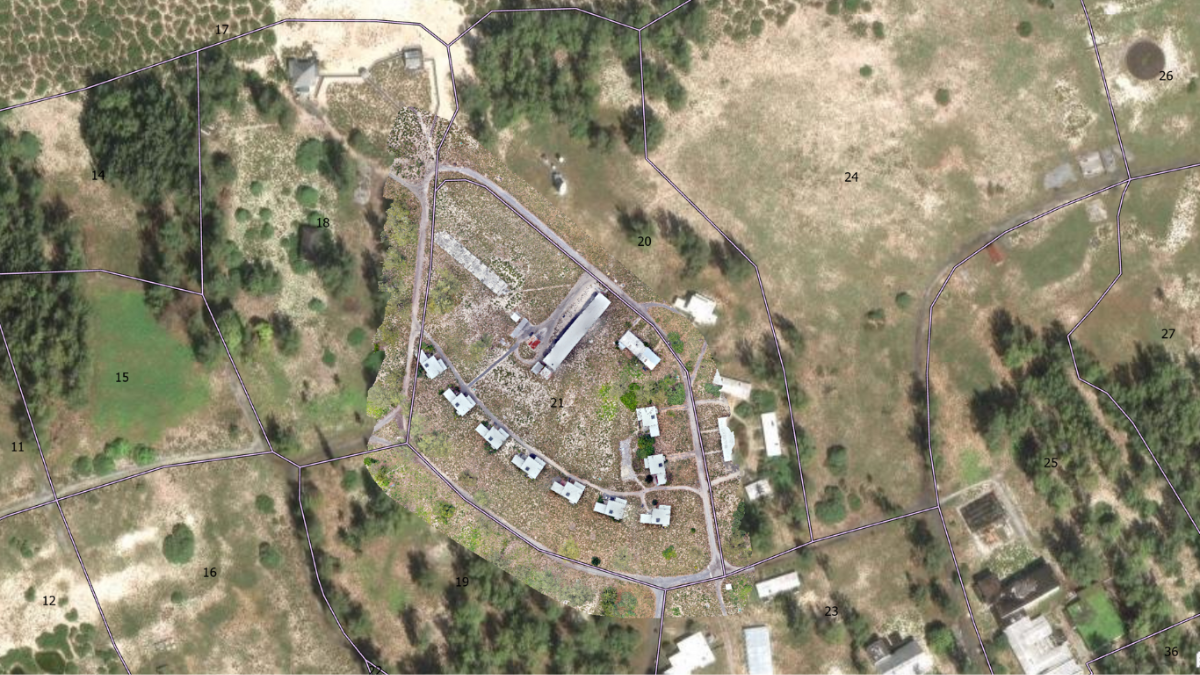 “A drone image helps to refine sector boundaries on Midway Atoll”
“A drone image helps to refine sector boundaries on Midway Atoll”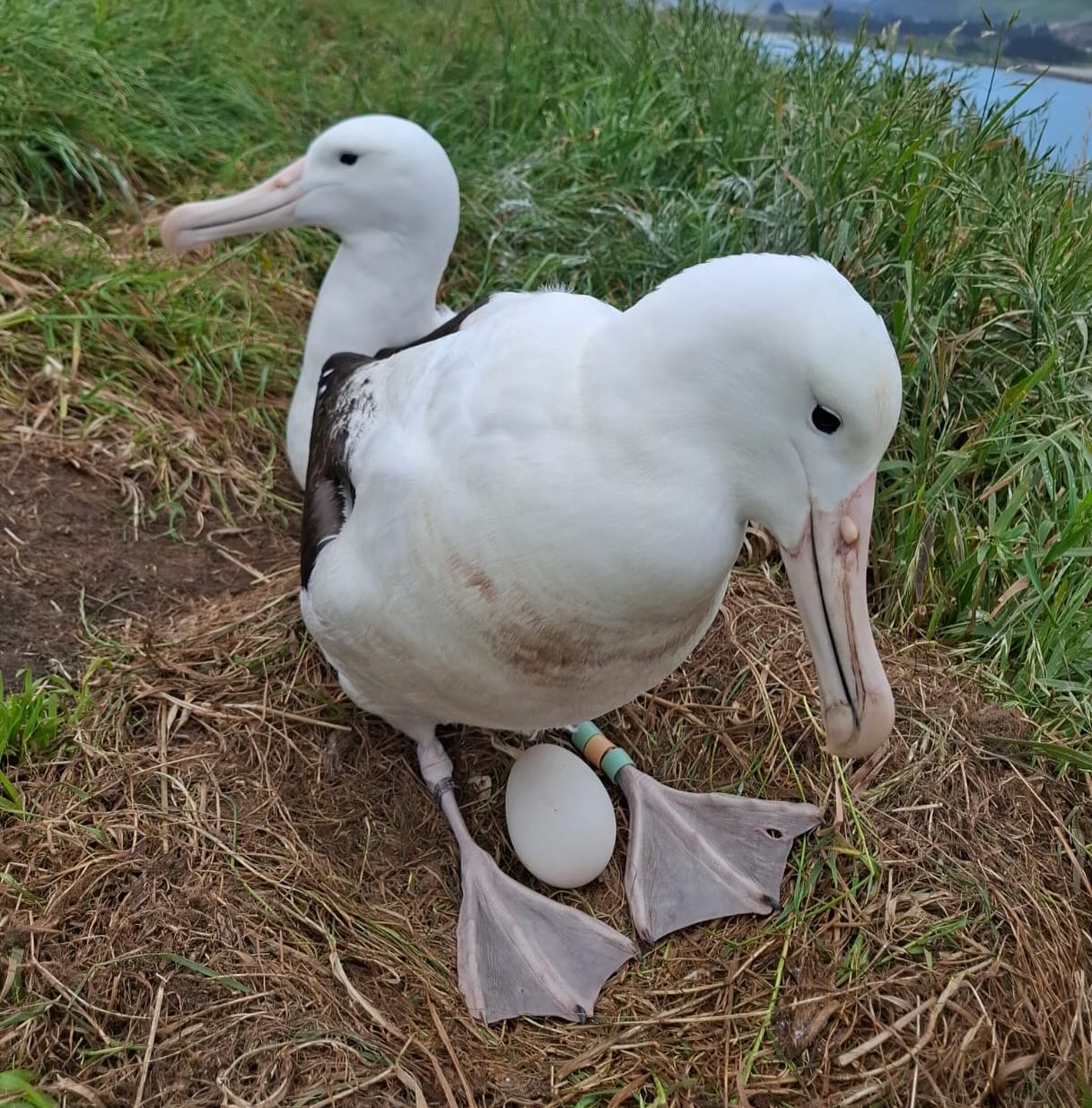 Female LYL (Lime-Yellow-Lime) exposes her egg for the photographer, her new partner is behind, photograph from the Royal Albatross Centre
Female LYL (Lime-Yellow-Lime) exposes her egg for the photographer, her new partner is behind, photograph from the Royal Albatross Centre